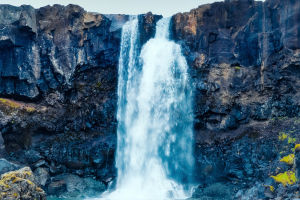In Japan in January, maybe you want to go skiing a thrilling snow in Hokkaido, or go to Hakone to experience the warm winter hot springs, or go to Okinawa to watch the gorgeous early cherry blossoms. But have you ever wanted to go to see the fairy-tale dreamy Shirakawa-go?
This article will introduce the Shirakawa region, which is considered to be the secret of Japan's snow country. There are also small houses called Gassho-style (thatched gabled wooden roofs), a World Heritage Site.
Shirakawa-go is located in the northwest of Gifu Prefecture, among the valleys of the Hida Highlands. It was built from the late Edo period to the Meiji period. Due to the geographical relationship, it has been in a state of heavy snow for a long time, and the snow can often reach two meters!
In order to allow the snow to slide down smoothly without accumulating on the roof, the roofs here are designed to stand up sharply. The space inside the roof is used to raise silkworms or store grain. In 1995, it was assessed as a world cultural heritage. The oldest gassho house is nearly 300 years old.
The Gassho House uses straw and reeds to cover the roof, which is very strong without a single nail. It is not difficult to find that the ridges of the houses in the village are oriented in the same east-west direction, in order to resist the north-south wind direction, and also help the thatch on the roof to receive more light and keep it dry.
There are a total of 114 spired wooden houses in Shirakawa-go. People have lived here for generations, and every 30 years, a large-scale roof renovation is carried out. This requires a lot of manpower, so every time someone needs to renovate the roof, the whole village will be dispatched and work together to complete it.
How the times outside change, the people here live on and on from generation to generation at their own pace.
There are a total of 114 spired wooden houses in Shirakawa-go. People have lived here for generations, and every 30 years, a large-scale roof renovation is carried out. This requires a lot of manpower, so every time someone needs to renovate the roof, the whole village will be dispatched and work together to complete it.
How the times outside change, the people here live on and on from generation to generation at their own pace.
The settlement pattern of Shirakawa-go Ogi-machi is very clear. It is backed by Chengshan Mountain and faces Zhuangchuan directly. A road running parallel to Zhuangchuan is the skeleton of life.
With the beautiful rope bridge meeting bridge as the gateway for tourists, the whole village is within walking distance. 1.5km north-south—along the road there are parking lots, gas stations, supermarkets and other service facilities where local people gather; about 400m east-west, across Zhuangchuan by a rope bridge—the west bank of the bridge is the tourist information office, museum and bus stop.
The terrain surrounded by mountains makes it look like a paradise, and the scene is full of changes every season. Especially in winter, when the snow is blowing, the different scenery in the mountain villages blends into one. Against the backdrop of the continuous traditional houses, it is like a fairy tale world.
The "gassho" is covered with snow. At this time, Shirakawa-go is lying quietly in the embrace of the peaks of Baishan. The air and time seem to stand still. You just want to look greedily at the unrealistically beautiful scene in front of you, desperately remember this moment, remember the sun, the wind, and the smell here.
Stepping on the rolling snow, the thatched wooden houses and small bridges you can see make this simple and elegant small mountain town more charming. If it is accompanied by a cup of hot tea, it will be really happy. And the infinite beauty of Gasshang Village that tourists can easily take photos can be made into postcards!
Every year from mid-January to mid-February, Shirakawa-go will hold a famous lighting ceremony, which can be enjoyed only 4 nights a year.
The most visited time in Gassho Village every year is on Illumination Day, when Japanese photographers and overseas tourists flock to stand in the snow for hours just to catch a glimpse of Shirakawa-go between dusk and night.


